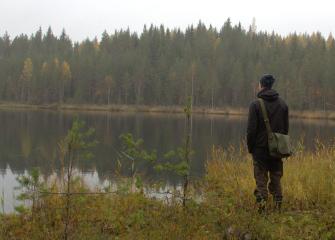Nature in Finland

Biodiversity loss is a global issue, and Finland is no exception. Currently, 12 percent of our species are threatened, putting them at risk of extinction within Finland. Additionally, nearly half of Finland's habitat types are considered threatened. As nature becomes impoverished, its ability to adapt to factors like climate change weakens, and humans lose out on the benefits it provides, leading to a decline in our natural capital.
The decline in biodiversity is mainly because we use land and water without taking enough care of their natural importance. Additionally, invasive alien species, chemical stress, and climate change make things even worse for our natural environments.
A wide range of measures to halt the biodiversity loss
Efforts to combat biodiversity loss have been recognized, and the goal is to halt this decline by 2030. Achieving this objective is feasible by expanding actions to encompass all facets of nature and natural resource utilization. Moreover, damaged natural environments must be restored, and efforts must be made to combat climate change, eutrophication, and invasive alien species.
Nature conservation areas play a vital role in halting biodiversity loss. However, the current network of protected areas in Finland is unbalanced, with a concentration in the treeless and sparsely forested lands of the north. Less than seven percent of forest land is protected, and this figure is even lower in Southern Finland. The European Union aims to protect 30 percent of Europe's land and sea area, with 10 percent designated as strictly protected.






